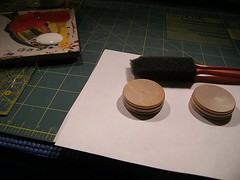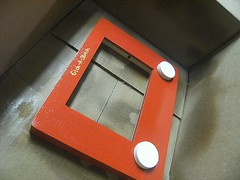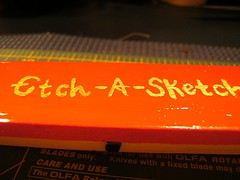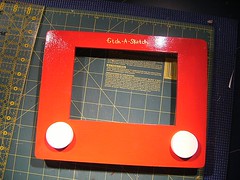
As requested by Type Jo Negative of PCRD, here is a quick and simple tutorial that will make wrist bands that your jam refs will love! I made some for my league because there was always a scramble before the bout when the Head Referee asked me for bandanas of each color for the jam refs. I made a set for our league and after bouting against a nearby league, they commissioned a set. They are quick, simple, and cheap!
Supplies/Tools:
- Sewing Machine
- Scissors
- Fabric
- 2" Wide Sewable Velcro
- Scissors
- Iron (optional)
- Cutting Mat, Rotary Cutter, Ruler (optional)


Cut the fabric to 12x6" (you might want to measure your league's main jam ref's wrist while he or she is wearing a wrist guard to make sure you don't make it too small or large!)

Once you have your piece cut out, fold it inside out and hotdog style. The green dashes show where you will be sewing

Again, make sure it is inside out and sew it together (leaving the top open). Once you've sewn it together, turn it back right side out.

Fold the open edges to the inside of the wrist band.

Once I have folded the open end in, I like to iron it to make sure that those edges stay down. This is optional, but it makes it much easier.

Sew the line closed.

Now you're ready to add the velcro. Take one side (doesn't matter if it's the hook or the loop side, just make sure you're only sewing ONE of them on) and place it near the top of your wrist band. Sew the velcro about a quarter of an inch in.

Sew the next piece of velcro on the opposite end and opposite side of where you placed the last piece of velcro.

You should have to flip one side over to see both velcro bits.

Seriously, that's it! It's ready to go!
.JPG)
I made wrist bands for my team and all of the teams we would be playing this season. Jam refs love them because you don't have to tie them like a bandana, they're less constricting than those spandex glove covers, super visible to jammers and NSOs, and easy to switch during half-time.


















